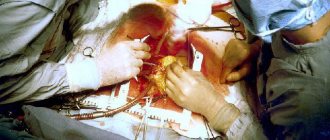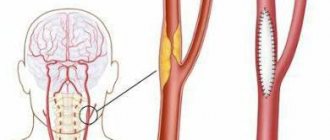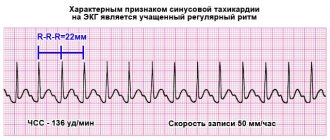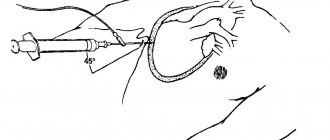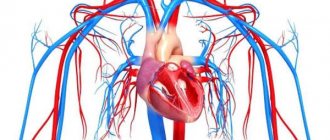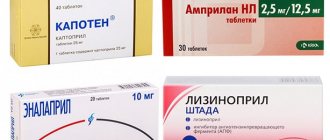Crossectomy is a modern take on a technique known among surgeons, called the Troyanov-Trendelenburg operation. Today, specialists have significantly modernized it in order to reduce trauma for the victim, as well as significantly increase effectiveness.
The meaning of an intervention of this kind involves the classic ligation of the great saphenous vein of the thigh and the smaller branches closest to it. With the help of this, it is possible to quickly achieve the elimination of the sapheno-femoral anastomosis, or the point of entry of the large subcutaneous vessel into the femoral part.
Operations on the veins of the lower extremities
The difficulty of treating varicose veins lies in the lack of accurate data on the factors that provoke the disease. Phlebitis, thrombosis and thrombophlebitis, which are a complication of venous dysfunction and inflammatory processes in blood vessels, have become widespread throughout the world, regardless of climatic and social living conditions. Treatment of these pathologies is based on two principles: maintaining the blood in a stable liquid state and preventing deformation of the veins.
If the effectiveness of supportive and drug therapy is not sufficient to maintain a normal quality of life, phlebectomy is performed routinely (phlebectomy - removal of veins affected by varicose veins). As for the Troyanov-Trendelenburg operation (crossectomy), this type of surgery is performed for urgent indications, and is also one of the stages of combined phlebectomy.
Possible complications
An emergency operation is associated with high risks, and already during the procedure the surgeon must be ready to expand the intervention area and transfer the patient to artificial ventilation and strengthen the team of assistants.
Possible complications:
- bleeding as a result of violation of the integrity of the vein wall - in cases where the saphenous vein has seals;
- damage to the femoral artery;
- postthrombophlebitic syndrome;
- thrombosis of the iliofemoral localization;
- damage to the lymphatic passage;
- inflammatory processes in the work area;
- infection through surgical approaches;
- nerve damage;
- allergy to anesthetics.
If the operation is performed in a timely manner, the likelihood of complications is minimized.
Operation Troyanov-Trendelenburg
Crossectomy (Troyanov-Trendelenburg operation) is an emergency vascular operation, the purpose of which is to prevent the penetration of a blood clot into the deep femoral veins, or to prevent the detachment of a blood clot with the subsequent development of pulmonary embolism.
During the operation, the great saphenous vein is crossed at a distance of 0.7-1 cm from the site of its connection with the femoral vein. At the same time, the estuarine tributaries of the vein are ligated. The result is that the blood circulating in the superficial veins does not enter the deep highway in the area of the oval window, and the reverse flow through the saphenofemoral ostium also stops.
Goals
Crossectomy is nothing more than a radical way to stop the reverse flow of blood in case of acute damage to the veins.
The procedure is not performed for the purpose of treating varicose veins. For planned interventions, it is combined with other surgical techniques. For example, with combined phlebectomy.
Surgical treatment is performed outside of exacerbations, for chronic venous insufficiency.
In acute periods, crossectomy helps prevent thrombus formation in deep canals.
The main goal of crossectomy is to isolate the process so that from the great saphenous vein, which connects to the femoral vein, it does not move into the deep canals of the legs.
Indications and contraindications for surgery
Indications for crossectomy are as follows:
Ascending acute thrombophlebitis (area - knee joint and upper third of the thigh);- Purulent thrombophlebitis;
- Drug-induced thrombophlebitis.
The symptoms of these diseases are similar to each other. Severe pain appears in the lower limb, the intensity of which gradually increases. The leg becomes purple-blue, swells, and the general condition worsens. If the outcome is favorable, after a few days the swelling subsides, and the outflow of blood resumes through the network of collateral veins.
If the process develops negatively, the detached thrombus ascends with the ascending blood flow and enters the pulmonary artery. Blockage of the lumen of the vessel causes instant death. Another serious complication of acute thrombophlebitis is tissue necrosis with subsequent development of gangrene. In this case, the question of amputation of the limb is raised. Crossectomy is an emergency operation performed to prevent life-threatening complications.
Contraindications to crossectomy are acute infections (bacterial, viral) occurring with high temperature and febrile state, heart and kidney failure, diseases of the hematopoietic organs, uncontrolled diabetes mellitus, obliterating atherosclerosis.
The operation is postponed if there are infectious skin lesions in the groin area and the surgical access area.
Contraindications
Contraindications can be both absolute and relative:
The following are considered absolute contraindications:
- oncological diseases;
- diabetic nephropathy, signs of diabetic foot;
- severe obesity;
- multiple organ failure;
- severe atherosclerosis;
- cachexia;
- elderly and senile age.
Relative contraindications (that is, those in which the possible benefit should outweigh the risk) include:
- trophic disorders on the operated leg;
- state of limited mobility in the postoperative period;
- inability to provide round-the-clock compression in the postoperative period.
Technique of the operation
To perform the Troyanov-Trendelenburg operation, three surgical approaches are used: inguinal, supra-inguinal (according to Brupper), Chervyakov’s oblique longitudinal approach. When performing operations on the femoral vein, a vertical incision in the projection of the vascular bundle is most often used.
result of crossectomy
After tissue dissection, the proximal portion of the great saphenous vein is isolated. The femoral vein is clearly visible through the lumen of the fascia. Ligation of venous lines is carried out only after precise determination of the location of the sapheno-femoral anastomosis. To do this, a section of the femoral and saphenous vein is isolated at the junction. Having processed the estuarine tributaries, the surgeon crosses the trunk of the saphenous vein with clamps.
Ligation is carried out at the site of its confluence with the femoral vein. The Troyanov-Trendelenburg operation is effective in cases where thrombosis has not spread beyond the great saphenous vein. In case of superficial thrombophlebitis, surgical intervention is carried out no later than two days after the detection of a blood clot.
How is the postoperative period and rehabilitation going?
In the period after crossectomy, as well as against the background of some other surgical interventions, the patient’s risk of developing thrombosis and inflammatory processes increases significantly. To prevent negative consequences during the rehabilitation period, the patient must follow the following rules:
- taking vitamin complexes, immunomodulating drugs and agents that help improve the condition of the microflora of the digestive tract;
- taking antibiotics, anticoagulants, phlebotonics and other groups of drugs that prevent the development of inflammation, thrombosis, help improve blood flow and stimulate regenerative processes;
- A postoperative compression period is required, that is, recovery after surgery includes wearing pre-selected compression garments.
Elementary walking is a highly effective method of preventing the negative consequences of surgery. However, overwork is strictly contraindicated.
Crossectomy as part of combined operations
When a combined phlebectomy is planned, the first step is crossectomy. The surgeon makes an inguinal incision at the junction of the superficial varicose vein and the deep vein. The superficial vessel is cut off and ligated.
The next step is a second incision created at the top of the leg or ankle. The saphenous vein is identified and a metal probe is inserted and advanced to the site of the first incision. After reaching the first surgical access mark, the veins are fixed with a special thread on the probe tip.
The third stage is called stripping, or Babcock's operation. The tip of the flexible probe is pulled through the incision, while the sharp lower edge of the instrument cuts off the vein from the surrounding tissue.
Miniphlebectomy (Narat method) is a stage of the operation at which pre-marked venous nodes and tributaries are removed and the perforating veins are ligated. If the veins have a tortuous shape, the surgeon makes several incisions, removing the vessels in parts. The nodules are removed with a special surgical instrument (Muller hook) through miniature punctures (2 mm, no more), which subsequently heal on their own, without suturing.
Rehabilitation after crossectomy
Recovery methods include maintaining physical activity, giving up bad habits, and wearing compression stockings. Rehabilitation should be accompanied by an annual examination by a surgeon-phlebologist and an ultrasound scan.
In conclusion, we can say that crossectomy performed in isolation is an emergency operation, since it does not “treat” the perforating veins and does not remove the saphenous vein. Due to the fact that with this operation there is a high risk of “expansion”, the price is quite high - the cost of a crossectomy in Moscow ranges from 20 to 47 thousand rubles.
In German clinics, due to the high operational risk, its cost ranges from 4 to 6 thousand euros.
Sometimes people ask the question, which is better: crossectomy or miniphlebectomy? If there is no thrombosis and no risk of thrombophlebitis, and only small veins are affected, then miniphlebectomy should be chosen. In the event that there is an active inflammatory process, then the angiosurgeon will decide on the advisability of the operation.
Types of vein surgery
Venectomy, although it is not considered an operation after which the patient is bedridden for a long time (on the contrary, early activation is recommended), but, nevertheless, most patients agree to surgical intervention only if there are unconditional grounds. Phlebologists, in turn, strive, whenever possible, to use minimally invasive surgical methods that are not associated with significant blood loss and are not accompanied by postoperative pain syndrome.
Preliminary studies carried out using angioscanning allow one to obtain a reliable picture of the state of the venous bed, the valve apparatus of the superficial and deep veins. If areas of collection of venous blood from the deep bed into the superficial system are detected, a planned operation is prescribed, carried out under the control of an ultrasound machine.
The use of low-traumatic surgery is possible only in the early stages of varicose veins, when the result is well predicted and, moreover, a good cosmetic effect is achieved. In the future, there will be constant monitoring by a phlebologist, which is necessary to prevent the formation of thrombophlebitis.
In the case of the development of postthrombophlebitis syndrome, accompanied by insufficiency of the venous valves, the Cockett operation or the Linton operation is indicated, the essence of which is to ligate the perforating veins in the lower leg area (using the Cockett technique, ligation is carried out above the fascia, using the Linton technique - under the fascia).
A classic surgical technique in phlebology is the Keller operation, the essence of which is to remove a varicose vein under anesthesia. The disadvantage of this technique is the high probability of relapses in the treated period (within 5 years, 50% of patients experience recurrent varicose veins).
Preparatory stage
Most often, surgery is required urgently, so a brief examination is carried out in preparation: general blood and urine tests, coagulogram, testing for HIV, viral hepatitis and syphilitic infection. An ECG and vascular ultrasound using Doppler ultrasound are mandatory to assess blood circulation.
This determines:
- affected area;
- anatomy of blood vessels in this area;
- the place of communication between the superficial and deep veins;
- prevalence of the pathological process.
Before the operation, the type of compression is selected, which should be used immediately after its completion. The patient is recommended to purchase either an elastic bandage or special tights with distributed compression of the blood vessels.
Watch the video about thrombophlebitis, its treatment and the dangers of the disease:
httpv://www.youtube.com/watch?v=embed/m_k6Mv4mkoU
httpv://www.youtube.com/watch?v=embed/m_k6Mv4mkoU
Rehabilitation period
After crossectomy, the patient quickly returns to normal physical condition. The operation itself lasts about an hour and a half (working with veins requires pinpoint precision, since each puncture is accompanied by heavy bleeding), and is performed under local anesthesia. Conservative therapy is prescribed on the second day, and on the same day the patient is allowed to get up. The doctor selects the type of compression products (stockings, bandages, knee socks) with the required degree of compression. Medical knitwear is used for at least two months after surgery. A necessary condition for recovery is physical activity - long walks, performing a set of exercises that improve blood circulation. The rehabilitation program is drawn up by the attending physician.
How to prepare
It is carried out urgently and most often under local anesthesia. Preparation for it is minimal.
An ultrasound examination of the venous canals of the legs is performed to determine the boundaries of the blood clot and the features of the anatomical structure.
They take clinical urine and blood tests, examine the blood for HIV, syphilis, hepatitis B, C.
A coagulogram is performed and the surgical site (upper third of the thigh) is shaved.
The patient, for his part, must be prepared and familiarized with the upcoming procedure.
Before the operation you need:
- notify the doctor about the medications you are taking - they may affect the development of bleeding or the effect of anesthetics;
- ask the doctor whether you need to stop taking blood thinners (warfarin, aspirin) before the procedure;
- Do not shave the skin at the incision site yourself;
- take a shower;
- if general anesthesia is planned, do not eat 6-8 hours before the start.
Crossectomy - ligation of the mouth of the great saphenous vein
Ligation of the mouth of the great saphenous vein - crossectomy is an element of a surgical operation for varicose veins (phlebectomy), or an independent operation for ascending thrombophlebitis. Previously, this operation was used as an independent method of treating varicose trophic ulcers.
Read also: Operation of varicocele veins remained
Acute thrombophlebitis of the saphenous veins most often should be treated conservatively. Indications for surgical interventions arise when there is a threat of complications. The most common reason for surgery is progressive thrombophlebitis of the great saphenous vein, with the threat of spreading to the deep veins. It is with this complication that ligation of the great saphenous vein is indicated. Bandaging allows you to block the thrombus from accessing the deep venous system.
Signs and treatment
Damage to the great saphenous vein can be:
Acute thrombophlebitis of the saphenous veins develops suddenly due to sudden blood clotting. The reasons can be very different - infection, injury, pregnancy and others. Signs of acute ascending thrombophlebitis:
- Varicose veins become painful and dense;
- The leg swells and increases in size;
- Sharp pain may occur when walking;
- Chills and fever appear;
- General weakness persists;
- Lymph nodes enlarge.
With ascending thrombophlebitis of the saphenous vein, there may be no edema. Most often, heaviness is felt when palpating the inflamed vein, and the skin has a reddish tint. There is a feeling of heaviness in the lower leg. However, with the acute form of the disease and further spread of the disease, damage occurs:
- Great saphenous vein;
- Common femoral vein;
- Sapheno-femoral anastomosis.
Thrombectomy method
Thrombectomy is an operation to directly remove a blood clot from the lumen of a vein. In this case, two types of surgical intervention can be used - traditional (radical) and endovascular - without excision of blood vessels. The first type of thrombectomy is used in most cases only in severe conditions of the patient with thrombophlebitis and deep vein varicose veins.
Restoring the patency of the great veins surgically began to be used since 1965.
Today, endovascular thrombectomy is most often used. It is performed using a catheter, so the blood clot is removed, but the affected vein itself is not excised. This allows you to prevent complications associated with partial or complete removal of the vein, which can be critical in thrombophlebitis.
Contraindications to the procedure:
- chronic diseases in the acute stage;
- severe heart pathologies;
- the presence of a malignant tumor;
- thrombophlebitis complicated by gangrene;
- difficult pregnancy, accompanied by exhaustion of the woman, gestosis or anemia;
- severe venous insufficiency;
- radiation exposure.
Thrombectomy is considered a minimally invasive procedure because a small incision is required. Through it, a Fogerty catheter ending in a latex balloon is brought to the location of the thrombus. During insertion through the incision, it is empty, but when contact with a blood clot is made, it is filled with a drug that promotes the retraction of thrombotic masses. This may require several repetitions of the process if the clot is large. The entire procedure is controlled by an ultrasound machine or x-ray. If it is not possible to remove the blood clot from the vessel, then a catheter is also inserted into the vein, but substances are supplied to the clot that destroy and dissolve it.
During the postoperative period, the patient is required to wear compression garments without removing them for at least three days to prevent relapses. The possibility of re-development of thrombophlebitis is the only disadvantage of endovascular thrombectomy. In addition to slimming knitwear, to consolidate the achieved result, you will need to resort to a course of drug therapy. For this purpose, anticoagulants are most often prescribed - drugs that help reduce blood clotting.
Thrombosis of the great saphenous vein
When thrombosis occurs, the vein becomes blocked and blood flow becomes obstructed. Thrombosis of the great saphenous vein most often occurs due to damage to the venous wall. The most difficult and dangerous option in terms of the development of complications is considered to be acute ascending thrombophlebitis of the great saphenous vein. There are three options for the course of events with blood clots:
- possible blockage of the vessel and disruption of blood circulation;
- can break off and pass with blood to other organs;
- may resolve.
Read also: Varicocele after Ivanissevich operation
The disease requires immediate treatment under regular supervision of a specialist.
In Europeans, thrombosis of the saphenous veins of the lower extremities occurs much more often than in Asians. After forty years, this disease is observed in every fifth woman and every fourth man. In obese people, the risk of thrombophlebitis is significantly higher.
When is surgery required?
Thrombophlebitis is treated by a vascular surgeon or a more highly specialized doctor - a phlebologist who deals exclusively with veins.
In any case, the stages of diagnosis and therapy will be the same. But to get rid of thrombophlebitis, experts do not always recommend surgery, since in most cases it is possible to cope with the disease using conservative methods. In the early stages of development, the disease is characterized by inflammation of the venous wall, as a result of which individual blood cells begin to attach to it. Then a full-fledged thrombus gradually forms, covering part of the lumen of the vessel. As the size of this blood clot increases, blood circulation becomes more and more impaired.
The danger of the pathology is not only the possibility of blockage of the vein in which the thrombus initially began to form, since in some cases collaterals can form. These are spare, bypass pathways for blood flow, ensuring the necessary supply of cells with oxygen and nutrients. The greatest risk occurs when a blood clot breaks away from the inner surface of the vessel and begins to migrate through the bloodstream, creating the possibility of embolism - blockage of the lumen of the vein feeding a vital organ.
Most often, pulmonary embolism occurs, resulting in death without emergency surgery.
Surgical intervention is prescribed in the later stages of the disease, when a blood clot causes complications that interfere with the patient’s normal functioning. Also, surgery may be indicated if one of the deep veins is affected, since this type of thrombophlebitis is the most dangerous. In addition, the surgical method is the only way to prevent embolism when a blood clot breaks off. If the patient's condition is not complicated, but conservative therapy does not produce results for a long time, surgery may also be indicated.
